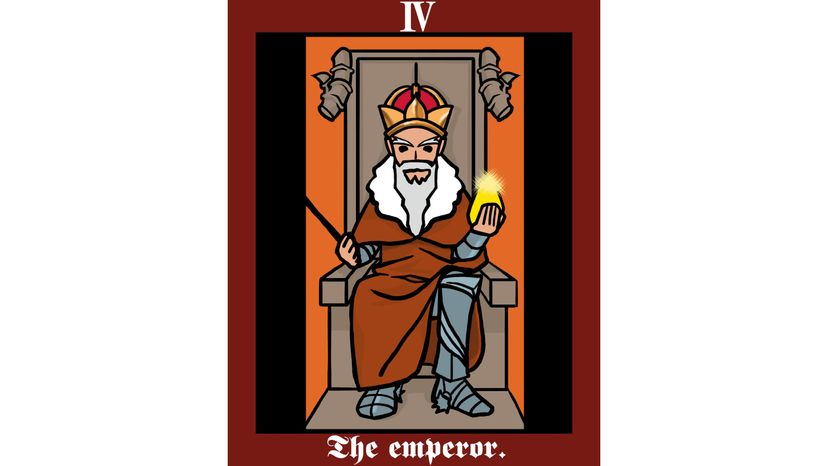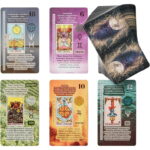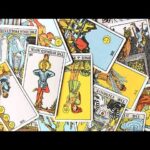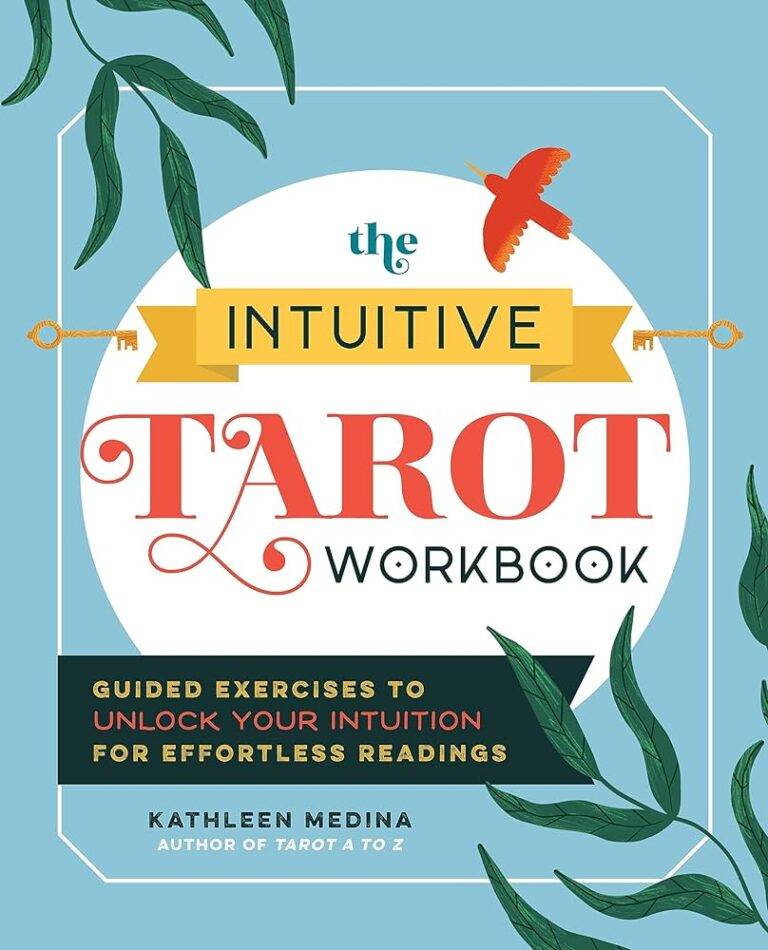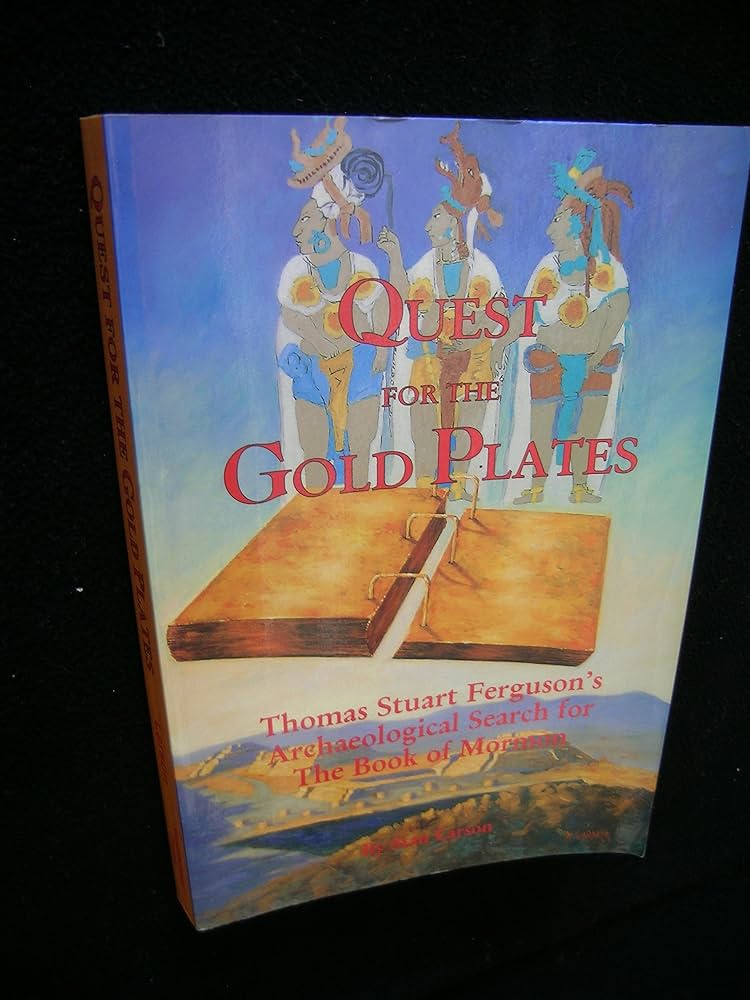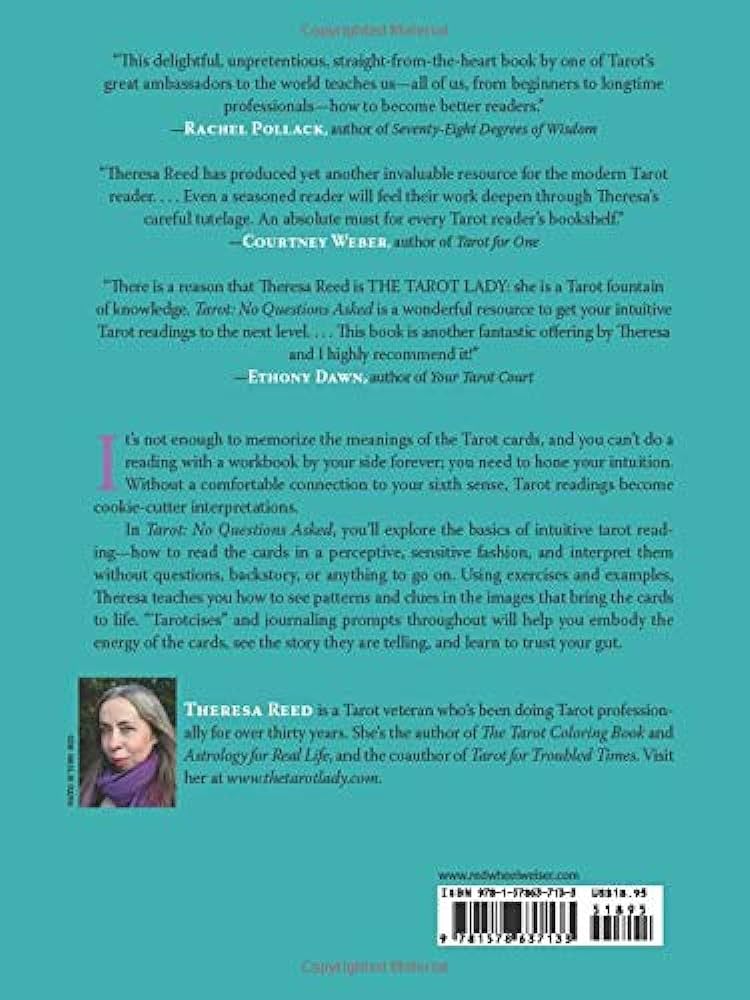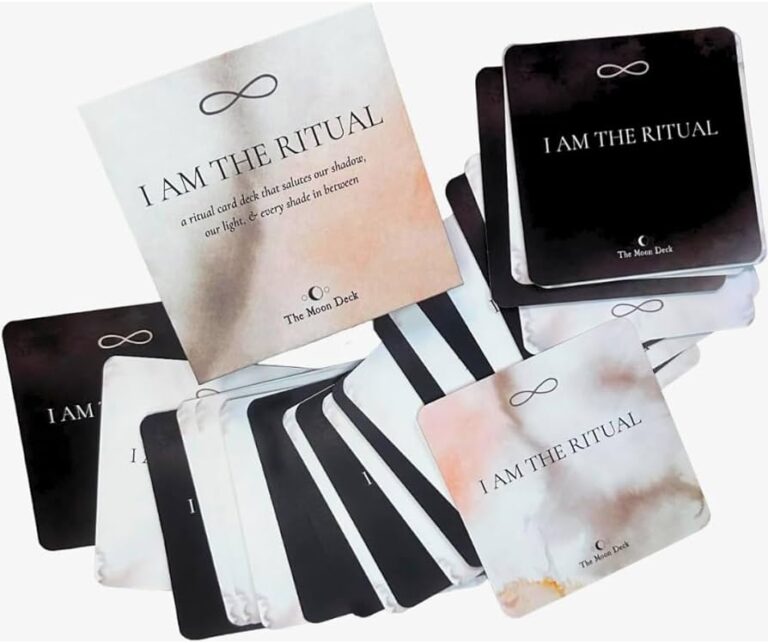What Do Reverse Tarot Cards Mean: Unlocking the Enigmatic Messages
Reverse tarot cards have different meanings than their upright counterparts and can indicate the opposite, excessive or insufficient energy, or internalized energy of the card. In a relationship context, the reversed Lovers card can suggest problems, disagreements, or a sense of distance between partners.
The Hierophant reversed may represent someone who is not honest or forthright, while the reversed Chariot can symbolize revenge, conflict, or defeat. Reversed tarot cards often highlight blocked energy or offer a different perspective on the upright card’s message. They should be noticed and considered in tarot readings.

Credit: www.amazon.com
The Meaning Of Reverse Tarot Cards
Reverse tarot cards hold a different meaning than their upright counterparts. When a card appears reversed in a reading, it can indicate the opposite of its upright meaning, an excessive or insufficient amount of energy, or internalized energy. Understanding the meaning of reverse tarot cards adds depth to a tarot reading.
Understanding Reverse Tarot Cards
Reverse tarot cards can offer a different perspective and add depth to a tarot reading. When a card appears reversed, it means that it has been drawn upside down, altering its meaning. Understanding reverse tarot cards is essential to gaining a comprehensive understanding of the reading.
Interpreting Reverse Tarot Cards
Interpreting reverse tarot cards requires careful analysis and intuition. While upright cards generally represent positive outcomes or energies, reverse cards can indicate challenges, obstacles, or the need for introspection. It is important to note that reverse cards do not always have negative connotations. They can present opportunities for growth, highlight hidden aspects, or invite a more nuanced interpretation of the situation.
When interpreting reverse tarot cards, it is essential to consider the following:
- The opposite of the card’s upright meaning: A reverse card may signify the opposite of the card’s usual interpretation. For example, a reversed Empress card, which typically represents abundance and nurturing, could suggest scarcity or neglect.
- Too much or too little energy: Reverse cards can indicate an excess or deficiency of the card’s energy. For instance, a reversed Ace of Cups, symbolizing love and emotional fulfillment, may suggest emotional stagnation or overwhelm.
- Internalized energy: Reverse cards can signify internalized or hidden aspects of the card’s energy. They can point to repressed emotions, subconscious patterns, or unresolved issues.
Different Perspectives On Reverse Tarot Cards
There are diverse perspectives on reverse tarot cards among tarot practitioners. Some regard them as negative or challenging aspects, emphasizing their potential to disrupt the flow of the reading. Others view reverse cards as valuable insights, revealing hidden truths and inviting a deeper exploration of the situation.
When interpreting reverse tarot cards, it is crucial to trust your intuition and rely on your personal connection with the cards. As with any tarot reading, it is the reader’s responsibility to create a meaningful narrative using their expertise and understanding of the tarot deck.
Common Reversed Tarot Card Meanings
When it comes to reading tarot cards, the reversed position of a card can provide valuable insights into the situation at hand. The reversed card may indicate the opposite of its upright meaning, an imbalance in energy, or internalized energy. In this section, we will explore some common reversed tarot card meanings in the areas of love, peace, and other aspects of life.
Reversed Tarot Cards Of Love
In matters of love and relationships, reversed tarot cards can offer important indications of the current state of affairs. For example, when The Lovers card appears reversed, it could suggest that there are challenges or disagreements in the relationship. It may also indicate a sense of distance or lack of connection between partners. Understanding the reversed meanings of tarot cards can help shed light on the dynamics and potential issues within a romantic relationship.
Reversed Tarot Cards For Peace
Peace and harmony are desirable states in any aspect of life. In the realm of tarot, certain reversed cards can provide insights into obstacles or turbulence that hinder the attainment of peace. Take the Four of Swords in a reversed position, for instance. It could indicate a lack of rest or relaxation, a constant state of busyness or stress. Similarly, the Seven of Wands reversed may suggest challenges in maintaining boundaries or standing up for oneself. Recognizing the reversed meanings of these tarot cards can offer guidance on how to strive for inner peace and resolution.
Other Reversed Tarot Card Meanings
Beyond matters of love and peace, there are numerous other tarot cards that hold specific reversed meanings. For instance, the reversed Hierophant may point to someone who is not forthright or honest, going against the traditional value systems. On the other hand, the reversed Chariot may symbolize acts of revenge or conflict. Understanding these opposite interpretations of familiar tarot cards can help navigate the complexities of life and gain deeper insights.
When reading tarot cards, keep in mind that the interpretation of reversed cards depends on the specific spread and the surrounding cards. It’s essential to consider the overall context to uncover the intended message. By studying and familiarizing oneself with the diverse meanings of reversed tarot cards, one can gain a richer and more nuanced understanding of the cards’ symbolic language.
Reading Reversed Tarot Cards
When it comes to reading tarot cards, interpreting the opposite meaning of reverse tarot cards can offer a new layer of insight. Reverse tarot cards, also known as inverted or upside-down cards, can provide valuable information about the situation at hand. In this blog post, we will explore the art of reading reversed tarot cards and delve into the significance they hold in a tarot reading.
Interpreting The Opposite Meaning
When a tarot card appears in reverse, it often signifies the opposite of its upright meaning. The reversed card invites us to consider a different perspective or a shift in the energies surrounding the situation. For example, if the upright card represents success and achievement, its reverse counterpart may indicate setbacks or obstacles in reaching our goals.
Considering Excess Or Lack Of Energy
Another way to interpret reverse tarot cards is by observing the excess or lack of energy they may represent. Inverted cards can indicate an overwhelming abundance of the card’s energy, causing imbalance or challenges. Conversely, reverse cards can suggest a deficiency or scarcity of the card’s energy, signifying a need for more attention and focus in that particular area.
Exploring Internalized Energy
One fascinating aspect of reverse tarot cards is their ability to reveal internalized energy. When a card appears upside-down, it can suggest that the energy associated with that card is being turned inward. This internalization could indicate the need for introspection, self-reflection, or personal growth in the area represented by the card.
Now that we have explored the different ways of reading reversed tarot cards, we can approach our tarot readings with a broader perspective. By understanding the opposite meaning, considering excess or lack of energy, and exploring internalized energy, we can unravel the deeper messages concealed within reverse tarot cards.

Credit: www.slideshare.net
Reversed Tarot Cards In Relationships
When it comes to using tarot cards in relationship readings, interpreting reversed tarot cards can provide valuable insights. Reversed cards indicate a change or blockage in the energy of the card, revealing hidden aspects and challenges in a relationship. Let’s explore three significant cards that can appear in reversed positions and their meanings in relationship readings.
The Lovers Card Reversed In Relationship Readings
The Lovers card reversed can suggest difficulties or disagreements within a relationship. It indicates that you and your partner may be facing challenges and struggling to find common ground. Important decisions might be causing disagreements and tensions. It could also signify a feeling of disconnection or lack of intimacy between you and your partner. Take the time to communicate openly and honestly to address the issues and work towards finding harmony.
Tarot Cards Symbolizing Dishonesty In Relationships
When it comes to dishonesty and deceit in relationships, certain tarot cards in reversed positions can serve as red flags. One card that signifies dishonesty is The Hierophant reversed. This card represents someone who plays by their own rules and isn’t forthright. It suggests that there may be trust issues within the relationship that need to be addressed and resolved.
Tarot Cards Representing Revenge In Relationships
The Chariot card can represent revenge when it appears reversed. It indicates a potential for conflicts and power struggles within the relationship. It suggests that one or both partners may be inclined to seek revenge or engage in confrontational behavior. It’s important to address any resentments, communicate openly, and work towards finding a resolution to prevent further damage to the relationship.
In conclusion, interpreting reversed tarot cards in relationship readings can provide valuable insights into the challenges and dynamics within the partnership. It’s crucial to approach these interpretations with an open mind and use them as a tool for self-reflection and growth. By addressing the hidden aspects and challenges revealed by reversed tarot cards, couples can work towards building a stronger and more fulfilling relationship.
Tips For Reading And Understanding Reverse Tarot Cards
When reading tarot cards, reversed or upside-down cards have a significant role in adding depth and nuance to the reading. Understanding these reverse tarot cards can provide valuable insights into the hidden meanings and messages of the cards. In this section, we will explore some useful tips for reading and understanding reverse tarot cards.
Noticing Reversed Cards
Noticing when a card appears reversed is the first step to interpreting its meaning. While shuffling the deck or laying out the cards, pay attention to any cards that present themselves in a reversed position. Take note of these cards and keep them in mind during the reading. By noticing these reversed cards, you can start unlocking their unique messages and interpretations.
Understanding Reversed Card Messages
Reversed tarot cards often represent a shift in energy or a deviation from the card’s upright meaning. These cards can present challenges or obstacles that need to be addressed or explored further. It is essential to understand that reversed cards are not inherently negative; instead, they offer an opportunity for growth and learning.
One effective way to decipher the messages of reversed cards is by examining the symbolism and imagery of the card. Look for subtle differences from the upright position and consider how these changes may impact the card’s overall meaning. Additionally, pay attention to your intuition as you interpret the reversed card, as your inner guidance can provide valuable insights.
Different Interpretations Of Reversed Cards
Interpreting reversed tarot cards is not an exact science, and different readers may have diverse interpretations of these cards. It is important to understand that each interpretation carries its own validity and resonance. While some readers may see reversed cards as negative or blocked energy, others may view them as a form of inner growth or an invitation to explore alternative perspectives.
Ultimately, your interpretation of a reversed tarot card should align with your intuition and the overall energy of the reading. Trust your instincts and rely on your understanding of the card’s symbolism and context to determine its meaning. Embrace the fluidity and versatility of reverse tarot cards, as they provide a rich tapestry of insights and possibilities for your readings.
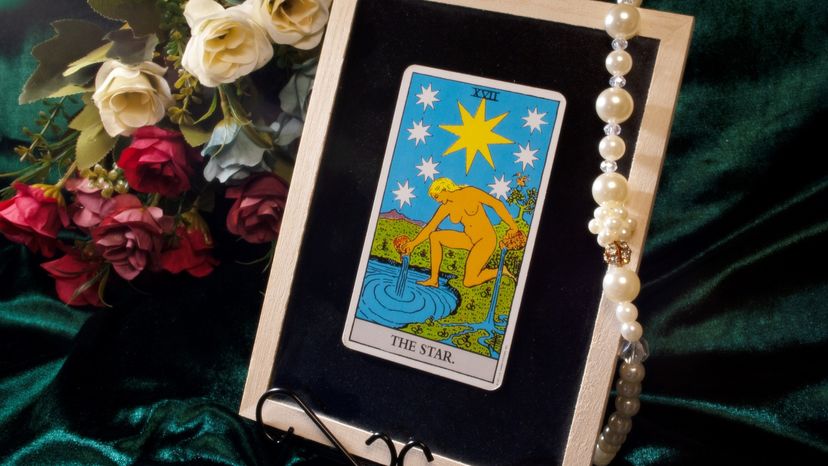
Credit: science.howstuffworks.com
Frequently Asked Questions Of What Do Reverse Tarot Cards Mean
How Do You Read A Reverse Card?
When reading a reverse card, it can mean the opposite of the upright card’s meaning, too much or too little energy, or internalized energy of the card. It may also indicate problems in relationships, dishonesty, revenge, or blocked energy. Reversed cards deserve attention as they can alter or emphasize the message of the upright card.
What Does The Reverse Card Mean In A Relationship?
The reverse card in a relationship can indicate problems, disagreements, and distance between partners. It suggests that something is off and that the couple is not as close as they used to be.
What Tarot Card Means Liar?
In Tarot, the reversed Hierophant card represents someone who isn’t honest, playing by their own rules instead.
What Tarot Card Means Revenge?
The tarot card that represents revenge is “The Chariot. ” It signifies war, triumph, presumption, vengeance, and trouble. When reversed, it can indicate riot, quarrel, dispute, litigation, and defeat.
Conclusion
When interpreting reverse tarot cards, it’s important to consider the opposite meaning of the card, an excess or lack of energy, and internalized energy. In relationships, the reverse Lovers card might indicate problems, distance, or disagreement. The reverse Hierophant can represent dishonesty, while the Chariot reversed may suggest trouble or defeat.
Reversed cards signify blocked energy and deserve attention. They can deliver good news or modify the upright card’s message. Therefore, understanding the meaning of reverse tarot cards provides a deeper understanding and insight into life’s situations.

